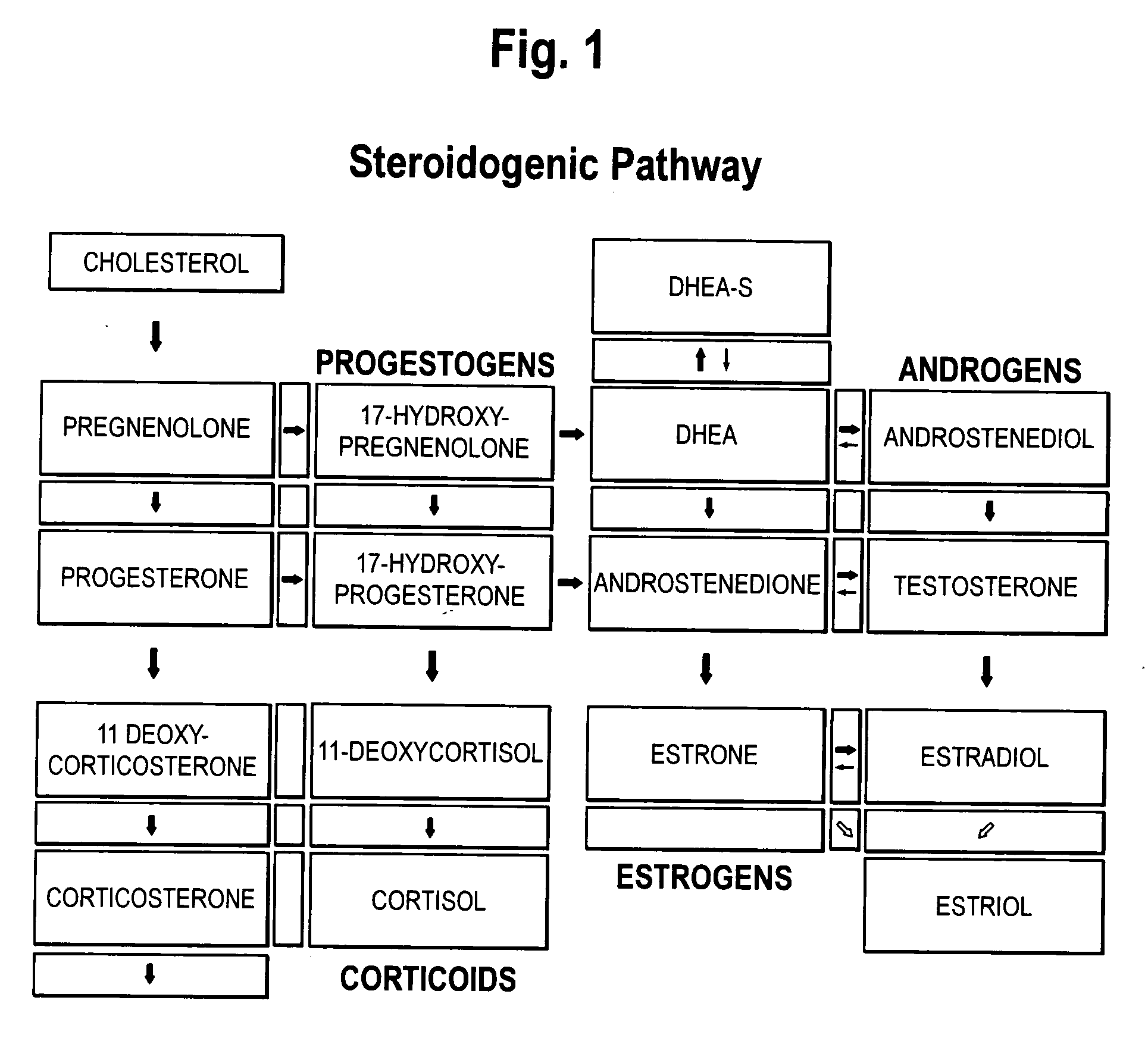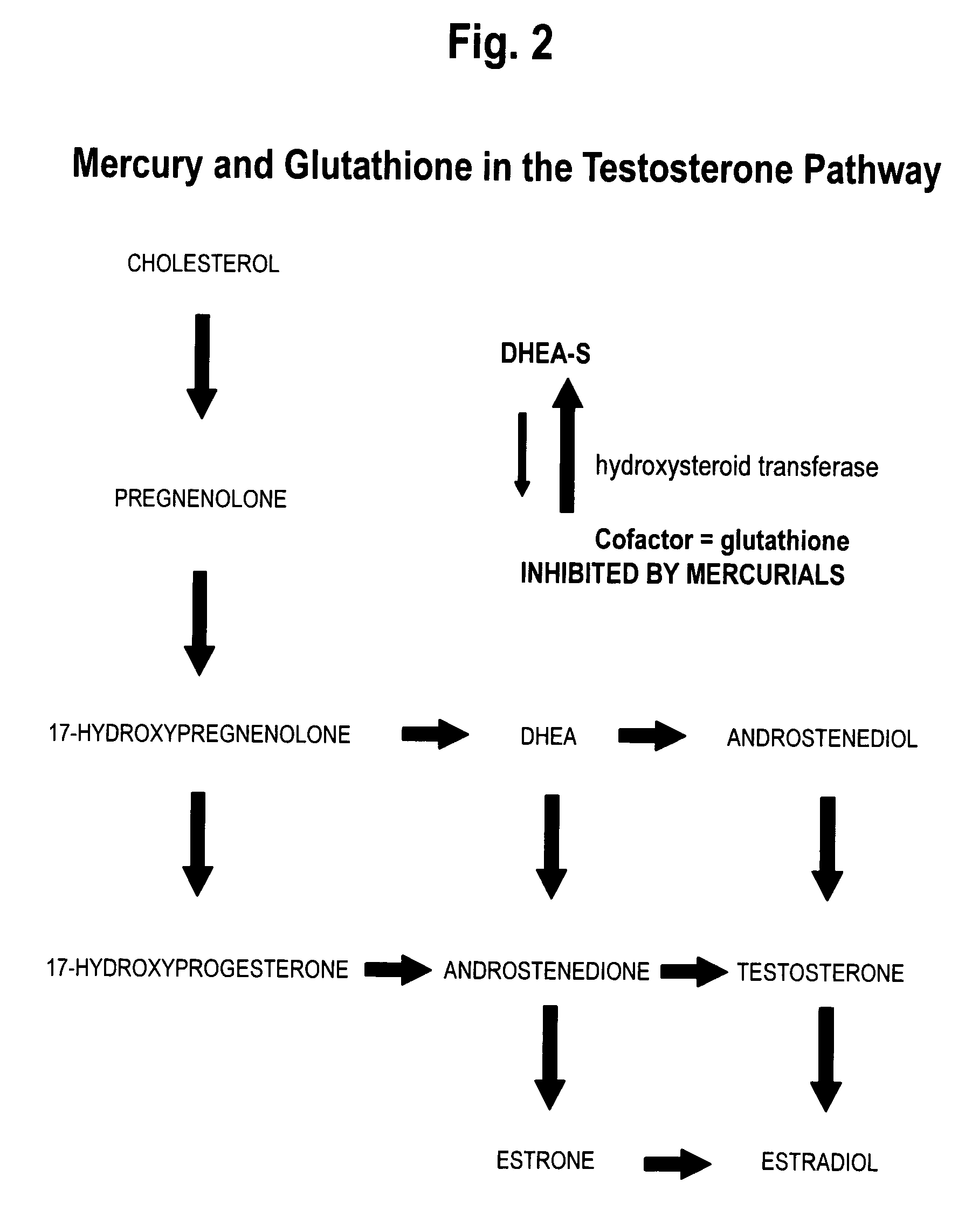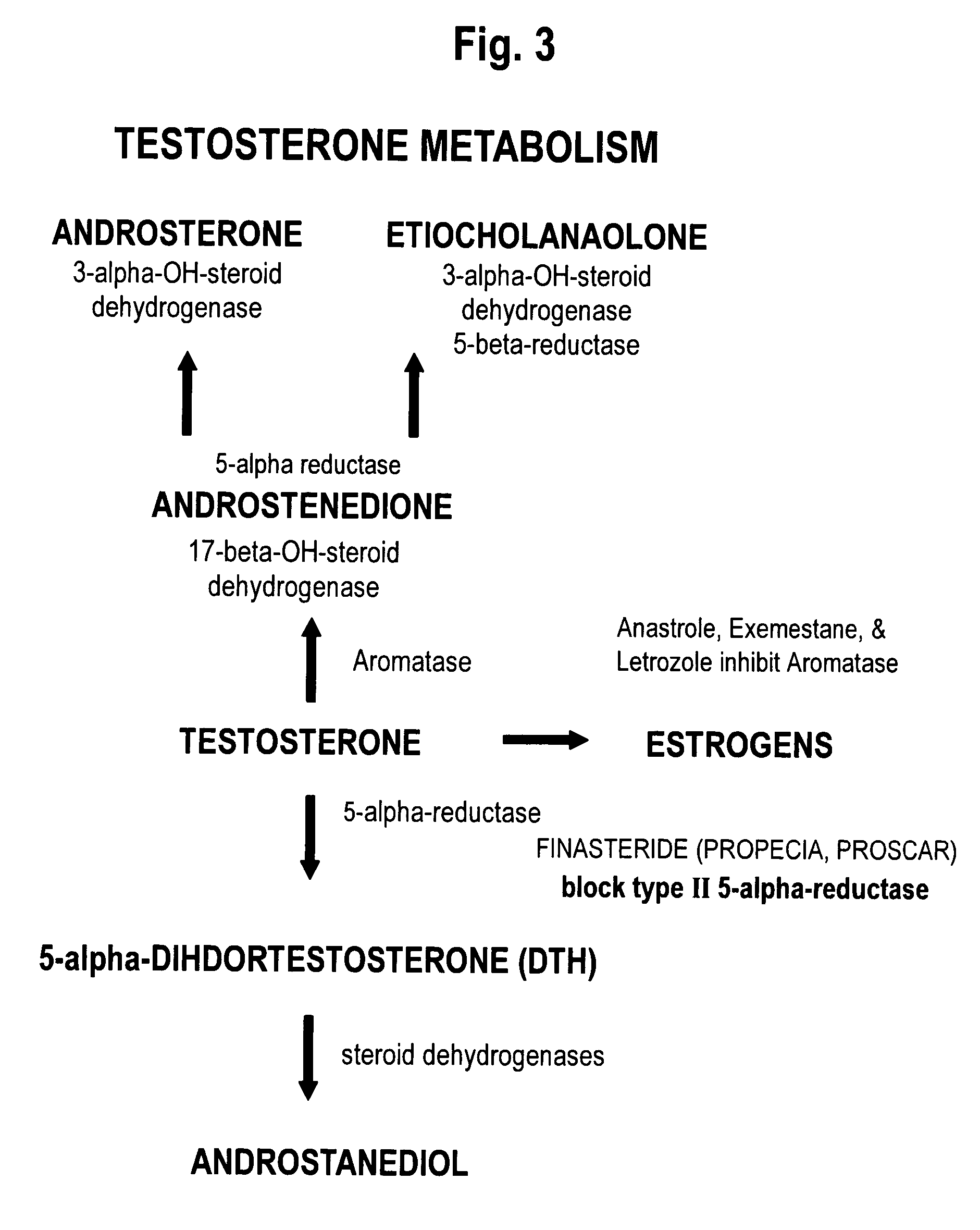Methods of treating disorders having a component of mercury toxicity
a technology of mercury toxicity and disorders, applied in the direction of metabolism disorders, extracellular fluid disorders, peptide/protein ingredients, etc., can solve the problems of mercury toxicity or poisoning, mercury toxicity or mercury poisoning, and sores may develop
- Summary
- Abstract
- Description
- Claims
- Application Information
AI Technical Summary
Benefits of technology
Problems solved by technology
Method used
Image
Examples
example 2
[0118] The patient was a six year old white male who was born in 1999 and diagnosed with autism (said child is hereinafter referred to as “Child Y”). Child Y was the product of a full term spontaneous vaginal delivery. Child Y had good APGAR scores and was believed to be totally normal at birth. Child Y developed normally meeting all of his developmental milestones during his first year of life. In addition, Child Y had all of his childhood vaccines in keeping with the recommended childhood vaccine schedule. Specifically, from birth to 18 months of age, Child Y had received 137.5 micrograms of mercury from his childhood vaccines. By the end of his second year of life, Child Y lost all of his language skills and declined into a fully autistic state. More specifically, Child Y developed severe gastrointestinal problems that are often seen in autistic children. Child Y never passed a normally formed stool. In fact, Child Y had an endoscopy on Jun. 23, 2003 which showed...
PUM
 Login to View More
Login to View More Abstract
Description
Claims
Application Information
 Login to View More
Login to View More - R&D
- Intellectual Property
- Life Sciences
- Materials
- Tech Scout
- Unparalleled Data Quality
- Higher Quality Content
- 60% Fewer Hallucinations
Browse by: Latest US Patents, China's latest patents, Technical Efficacy Thesaurus, Application Domain, Technology Topic, Popular Technical Reports.
© 2025 PatSnap. All rights reserved.Legal|Privacy policy|Modern Slavery Act Transparency Statement|Sitemap|About US| Contact US: help@patsnap.com



